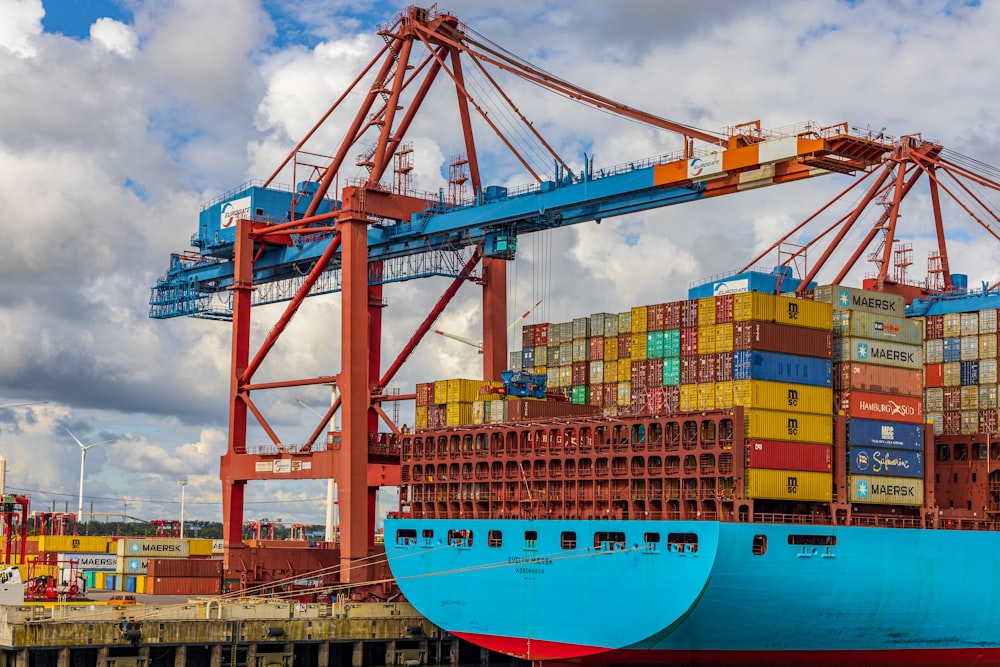From Emission Reduction to Carbon Neutrality: The Journey of Port Terminals Towards Sustainable Operations
By Edrian Blasquino
In the fast-paced world of global trade, port terminals play a crucial role in facilitating the movement of goods. However, this essential function comes with environmental consequences, as 20 to 30% of global CO2 emissions are often associated with international trade.
This statistic is prompting the industry to shift towards sustainable operations. In this article, we will explore the transformative journey of port terminals, focusing on their evolution from emission reduction to achieving carbon neutrality.
Evolution of Port Terminal Operations
Port terminals, historically, have been significant contributors to carbon emissions. As global awareness of environmental issues grows, scrutiny of the maritime industry has also heightened, prompting a more in-depth examination of its practices.
The tightening grip of environmental regulations has necessitated a reevaluation of traditional operational practices. Port terminals have faced increasing pressure to adopt sustainable solutions.
This is where advancements in technology come in. Various solutions have provided port terminals with the tools needed to transition towards eco-friendly operations. From electrified cranes to automated systems, innovation has become the key to achieving sustainability goals.
Initiatives Towards Sustainability
Green technologies are revolutionizing the way port terminals operate. From electrification of equipment to renewable energy sources, here are the innovative technologies that contribute to sustainable operations:
Adoption of Renewable Energy
Port terminals are increasingly turning to renewable energy sources such as solar and wind to power their operations. This shift not only reduces emissions but also positions these terminals as leaders in sustainable practices.
Implementation of Green Technologies
The incorporation of green technologies, such as energy-efficient lighting and electric vehicle fleets, is now a widespread practice, significantly contributing to the overall reduction of carbon footprints in port terminals.
Eco-friendly Container Handling
A crucial aspect of sustainable port operations is the adoption of eco-friendly container handling practices. The industry is investing in research and development to create containers that are not only efficient but also environmentally friendly.
Water Conservation Strategies
Port terminals are implementing water conservation strategies to reduce their overall environmental footprint. These strategies may include rainwater harvesting, water recycling systems, and the use of advanced technologies to minimize water usage.
Efficient Waste Management Systems
Sustainable port terminals prioritize efficient waste management. This includes recycling programs, waste-to-energy initiatives, and reducing single-use plastics to minimize the environmental impact of terminal operations.
Innovative Packaging Solutions
Port terminals are actively exploring sustainable packaging solutions, recognizing the significant impact that packaging materials can have on the environment. As part of this initiative, some terminals are adopting eco-friendly alternatives for fish packaging and other applications.
Biodiversity Preservation Programs
Recognizing the impact of port activities on local ecosystems, some terminals are initiating biodiversity preservation programs. This involves the restoration of natural habitats and the implementation of measures to protect local flora and fauna.
Carbon Offset Initiatives
To counteract unavoidable emissions, port terminals are engaging in carbon offset initiatives. This involves investing in projects that capture or reduce an equivalent amount of carbon to offset the emissions produced by terminal operations.
Alternative Transportation Solutions
To minimize emissions from on-site transportation, some port terminals are looking into alternative solutions, such as electric vehicles, hybrid machinery, and even the potential use of sustainable fuels.
Economic Benefits of Sustainable Practices
Contrary to the misconception that sustainability is costly, port terminals embracing sustainable practices have economic benefits, such as:
Financial Advantages: Cost Reduction
Sustainability brings immediate financial benefits by reducing operational costs. Energy-efficient technologies and optimized logistics not only align with environmental goals but also cut down on traditional, expensive energy sources, resulting in significant savings.
Long-Term Savings: Resilience Building
Sustainability is an investment in resilience. By adopting eco-friendly technologies and practices, port terminals prepare themselves for long-term challenges, avoiding disruptions and adapting proactively to industry shifts, leading to substantial long-term savings.
Enhancing Brand Value: Attracting Investments
Being a sustainability champion significantly enhances brand value, attracting environmentally conscious investors and partners. This, in turn, not only fosters financial stability but also results in an influx of sustainable investments, contributing to the terminal’s growth.
Regulatory Compliance: Penalty Avoidance
Proactively embracing sustainability ensures compliance with environmental standards, avoiding fines and penalties. This approach positions port terminals favorably in a regulatory landscape that increasingly values sustainable practices.
Resource Efficiency: Maximizing Productivity
Sustainability is linked to resource efficiency. Adopting practices that minimize waste, such as optimizing cargo handling and reducing fuel and water usage, maximizes productivity. This results in higher throughput, reduced costs, and increased profitability.
Global Trends and Industry Shifts
The maritime industry is in the midst of significant transformations, marked by global trends that redefine the approach to sustainability in port terminals.
- Digitalization and Smart Ports: The advent of digitalization is revolutionizing port operations. Smart ports, equipped with advanced technologies like IoT sensors and data analytics, are optimizing efficiency and minimizing resource usage. This technological evolution is a key driver in shaping sustainable practices within the industry.
- Global Collaboration for Sustainability: The industry is witnessing a surge in international collaborations and partnerships focused on sustainability. Ports are sharing best practices, engaging in joint research initiatives, and collectively working towards common environmental goals. This global collaboration underscores the shared responsibility of creating a sustainable maritime future.
- Evolving Regulatory Standards: Governments worldwide are enacting stringent environmental regulations, pushing port terminals to adopt sustainable practices. From emissions standards to waste management requirements, regulatory changes are a powerful force shaping the industry’s sustainability landscape.
- Market Demand for Eco-Friendly Supply Chains: Consumer awareness and demand for sustainable practices are influencing the entire supply chain. Ports are now under pressure to ensure transparency in their operations and prioritize eco-friendly alternatives, reflecting a broader shift towards sustainability in response to market expectations.
Conclusion
In conclusion, the journey of port terminals from emission-heavy operations to sustainability leaders signifies a profound shift in the maritime industry.
This transformation is not merely a choice but a responsibility—a commitment to present and future generations.
 About the author: Edrian is a college instructor turned wordsmith, with a passion for both teaching and writing. With years of experience in higher education, he brings a unique perspective to his writing, crafting engaging and informative content on a variety of topics.
About the author: Edrian is a college instructor turned wordsmith, with a passion for both teaching and writing. With years of experience in higher education, he brings a unique perspective to his writing, crafting engaging and informative content on a variety of topics.
Now, he’s excited to explore his creative side and pursue content writing as a hobby.
